Pilot Briefing
News from the world of general aviation
Sailing in with a splash
Luxury LSA promises access to land, water, snow
A $394,000 amphibious tailwheel airplane from France named Akoya that draws design inspiration from the world of high-speed sailing is preparing to make a splash in the United States. The cost of the light sport aircraft (LSA) includes training and a three-year maintenance and aircraft warranty.
The French company Lisa Airplanes, established in 2004, is preparing its two-seat, composite Akoya light sport aircraft for sale in the United States and Europe, and expects to start deliveries in France next year, followed by deliveries stateside at the end of 2013. The company claims 90 orders in Europe and expects to deliver the first 15 in France. The aircraft uses fin-like hydrofoils to provide lift and stability on takeoff from water and reduce drag in the air, and comes equipped with retractable landing gear and skis. It also has folding wings and an aircraft parachute. The company will exhibit the aircraft at EAA AirVenture, and will announce dealers on the East Coast this year.

A proof of concept aircraft flew in 2007 and a mockup appeared at AERO Friedrichshafen, the German general aviation show, that year. The proof of concept aircraft did not operate from water. A redesigned Akoya began flight tests a year ago.
The hydrofoils, inspired by innovations of the record-setting sailboat, Hydroptère, act as underwater “wings” to lift the aircraft above the sea surface on takeoff and allow it to cruise with minimal drag in the air. The aircraft boasts a top speed of 135 knots as allowed in the European market and 120 knots in the United States, according to U.S. Light Sport restrictions; at economy cruise speed (103 knots), the Akoya burns 12.4 liters (3.3 gallons) per hour of unleaded 95 fuel using a Rotax engine. It has a 550-pound useful load, and carries 18 gallons of fuel, or up to 29 gallons with an optional tank.
The Akoya will be built by subcontractors in France and Italy. Initially, five aircraft will be built starting this summer; one is to be used for Light Sport validation while the others will be used for the four deliveries. Once in production, the aircraft will become a direct competitor to the Icon A5, once the A5 enters production. Earlier schedules had called for the Akoya to enter production in 2011. — Sarah Brown
Still training after all these years
Cubs make pilots in Wisconsin
When the Taylor Cub evolved into the Piper Cub in 1937, the tandem two-place, high-wing monoplane immediately found favor as a training airplane. The Civilian Pilot Training Program soon employed a fleet as it created pilots for World War II, which loomed menacingly just over the horizon. And the Cub is still training pilots today, three-quarters of a century later.
CubAir Flight has three Piper J–3 Cubs at Wisconsin’s Hartford Municipal Airport. “On weekends and the long days of summer, we could use four,” said Steve Krog, who owns the school.
“We specialize in true grass-roots flight training. I prefer the Cub because it’s the first airplane I saw as a kid, and it’s the airplane I fell in love with back when I was 5 or 6 years old. And I’ve had an appreciation for them ever since.”

CubAir wants its students to learn how to fly by the sight, sound, touch, and feel of the airplane. “What we like to do is teach the very basics, teach attitude flying, and teach seat-of-the-pants flying. A Cub is excellent for that,” Krog said. “A Cub is one of the most docile, forgiving airplanes there is, provided you work with it a little bit. Students really like flying the Cub.”
Because the student sits in the backseat you have to teach, and the student has to learn, attitude flying—positioning nose in relation to horizon, power settings to achieve desired performance, said Krog, an instructor since March 1973.
He launched the school, with his wife’s encouragement, five years ago and thought he would pick up five or six students via word of mouth. “Within one week I had more than 20 students signed up—and it’s been that way ever since.”
Students range in age from 13 into their 70s. About a third are new students, pursuing a private or Sport Pilot certificate; another third are pilots getting back into flying. The rest are pilots who want to learn to fly a tailwheel airplane. “It’s always fun working with those folks. They’ve heard so many stories about flying tailwheel airplanes that they’re very apprehensive,” Krog said. “Then when I give them the chance to start to taxi the airplane around, it makes them very humble from the beginning.
“The Cub makes a very good pilot if you learn its quirks. The Cub wants to be flown correctly, and it will give great big hints when it’s not.” For example, Krog said it is very docile when teaching stalls. “Because it’s so docile, one of the things I insist on for all of my students is that they do spin training. There isn’t any amount of reading you can do or videos you can watch to learn how to do spins. I firmly believe that.”
Hartford is a great place for Cub training, he added. The paved runway has a grass landing area beside it, and a turf crosswind runway is 200 feet wide. “There aren’t too many days that we can’t fly.” — Mike Collins
Going, going, gone
Aircraft auction has aircraft flying away
Buyers came from Australia, Canada, and all over the United States to bid at an auction for an eclectic collection of 13 vintage, aerobatic, and sport airplanes at the Firebird Aviation Museum near Cleveland, Ohio.
But the 90-minute auction held May 19 at Geauga County Airport (7G8) was no fire sale.
John T. Venaleck, an inventor and industrialist, was pruning his aircraft fleet and decided to do it via a live auction—a sales method that appears to be increasingly popular in an age when eBay and reality shows such as Storage Wars have made such events semiprofessional sports. More than 200 people, almost all of them qualified buyers with bank letters of guarantee in their pockets, attended the Ohio auction and spent a total of roughly $1.3 million on airplanes ranging from a 1946 Aeronca Champ to an immaculately restored Spartan Executive.
Unlike distress sales at which buyers can expect steep discounts, many of the airplanes sold for a premium—even in a down market.
“My company specializes in aviation auctions so we know the products, we know what they’re worth, we have a mailing list of 52,000 potential buyers who have come to us to get on our mailing list,” said Steve Starman, founder of Starman Brothers Auctions, a Nebraska firm that has been organizing aviation auctions around the United States for more than 20 years. “I wouldn’t be much good at a tractor auction. But when it comes to aviation, I know the industry and I know where to advertise.”

Starman had advertised extensively in print and online aviation publications during the weeks leading up to the Ohio auction, and the ads apparently found their mark. Guy Bourke, a Qantas Boeing 767 captain in Melbourne, Australia, traveled all the way to Ohio and ended up buying a beautifully restored cabin Waco biplane for $155,000.
He plans to leave it in the United States this summer, fly it to EAA AirVenture at Oshkosh, then have it dismantled, packed in a container, and shipped to Australia.
“I feel some sympathy with the seller because I’m sure it isn’t easy to part with such a lovely airplane,” Bourke said. “But I can assure him it will be well looked-after in Australia. I can’t wait to take my family flying in it.”
The exchange rate helped Bourke, but U.S. buyers were equally aggressive—despite a steady decline in the value of most piston aircraft in the last four years. An Extra 300L, for example, sold for $204,000 despite an expensive crankshaft airworthiness directive that was as yet undone. A restored Champ sold for $24,000, an RV–8 went for $90,000— also with an unaddressed crankshaft AD—and an Experimental Pitts S–1S sold for $37,000.
More expensive and exotic aircraft seemed to sell at or below their market values, although the airplanes are so rare there are few comparable sales.
A Gee Bee Senior Sportster sold for $95,000, and the Spartan Executive went for $325,000.
A well-stocked open bar may have increased bidders’ willingness to spend freely, and a catered lunch added to the first-class feel of the event. But those features had no influence whatsoever on buyers such as Rick Gray, an award-winning aircraft builder and pilot from Ohio who was absolutely intent on buying a red, single-seat Pitts. He had researched the airplane, talked to the builder, and even took out an insurance policy so that he could fly the airplane home as soon as the auction ended.
“I’m going home with this airplane,” he said before the bidding started, “even if I have to pay more than it’s worth.”
Gray said that he knew he had “target fixation” even hours before the auction started, but he wanted the airplane for personal reasons. True to his word, Gray started the bidding and didn’t back off until he purchased it for $37,000.
Starman, the auctioneer, said his business does well in good economic times because he collects a percentage of the total revenue and high prices mean larger commissions. And he does well in bad times because there are more liquidations and more auctions to perform.
Unlike art or automobile auctions in which it’s common for buyers to bid remotely or via proxies, Starman said buyers tend to show up in person at aviation auctions.
“Buyers have to be here to assess the quality of each aircraft and know what they’re getting,” he said. “The people who come to the auctions are the real buyers. Looking at digital pictures, even good ones, just doesn’t cut it.” — Dave Hirschman
MyGoFlight Flight Bag PLC Pro
It’s a backpack. It’s a flight bag. No, wait—it’s both.
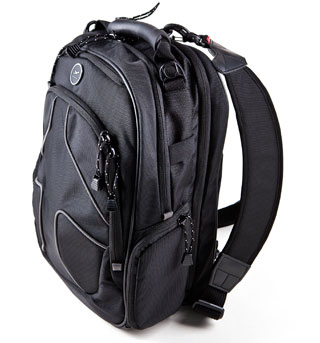
In an attempt to capitalize on the huge success of the iPad, MyGoFlight opened up shop a few years ago selling aviation iPad accessories. The company’s new flight bag, the PLC Pro (for paperless cockpit), is part flight bag and part iPad holder in the style of a backpack.
Continuing the recent theme of the more pockets the better, the PLC Pro has four main sections and two smaller sections, each with a number of sub-pockets. It also comes with two plush carrying cases for headsets or an iPad (AOPA photographer Chris Rose said they would even be great for camera gear), and shoulder straps for either a backpack or messenger carrying style.
The bag is big enough to fit multiple headsets, an iPad, and other small pieces and parts that we all bring in the airplane. A better option is one headset or two headsets and no iPad. Build quality is excellent and it’s relatively light, although much heavier than a comparable off-the-shelf backpack. If you crave an aviation-specific bag, want to go with a backpack style, and charts are a distant memory for you, the PLC Pro should be on your short list. — Ian J. Twombly
Flying high
- Sturdy
- Nifty features
Scud running
- Pricey
- Not very roomy
Gulf Coast Avionics ANR headset
Cheap noise reduction
It’s cheap. Or as they like to say in marketing departments, it’s inexpensive. What more can you say about the new Gulf Coast Avionics active noise reduction headset? Those marketing people think cheap has a negative connotation, but in this case it’s a compliment.
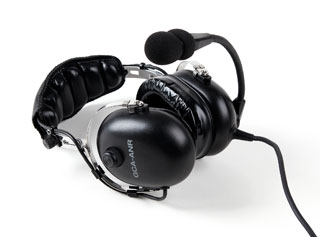
Simply put, Gulf Coast’s new ANR headset does the job. It’s comfortable enough to be worn for a few hours without soreness; it has a steel frame, so it seems fairly rugged; and it has active noise reduction technology. Better yet, when the batteries die you won’t be forced to declare an emergency because even the passive reduction is more than adequate. And for those who demand a lot of features in their cheap ANR headset, it has a cell phone or music interface as well.
After lots of trial and error, we finally discovered the headset takes a 9-volt battery. Instructions would have been nice. Oh, well, it’s cheap. In most cases, we would recommend buying a headset like this as a backup or for passengers. But the new Gulf Coast headset is good enough to be a primary accessory for the budget-conscious crowd. — Ian J. Twombly
Flying high
- Unbelievable price
- Fairly comfortable
Scud running
- Inconsistent build quality
Test Pilot By Barry Schiff
- From reader Richard Dawson: Assume that it takes an hour for an airplane to fly from A to B under no-wind conditions. On one particular day, however, the same flight requires only 30 minutes. How long would it take for the return flight on that same day?
- How is it possible to make a 360-degree turn such that the magnetic (wet) compass and the gyroscopic heading indicator are in agreement throughout the turn (no compass-turning error)?
- From reader Jerry Griggs: What was the Colditz Glider?
- In general, why is there more cloudiness associated with a low-pressure system than a high-pressure system?
- From reader John Schmidt: Dutchman Niek Vermeulen is recognized by Guinness World Records for his extensive collection of a specific and unusual kind of aviation item. What does he collect?
- What was the first production, all-metal airplane manufactured by Beech? Cessna? Mooney? Piper?
- From reader Dan Branstrom: Where is the world's longest hard-surface runway?
- Estimate within 50 feet the total takeoff distance available to Gen. Jimmy Doolittle when he took off from the deck of the aircraft carrier Hornet in a North American B–25 bomber to spend Thirty Seconds Over Tokyo on April 18, 1942.
New jets coming
Three new jets were announced in the spring by Cessna and Bombardier, a sign that while the recession isn’t over, it isn’t getting worse. Analyst Richard Aboulafia calls the economic stalemate “an absence of pessimism,” something that is seen as an improvement.
Cessna’s super-midsize Citation Longitude jet is aimed at the upper end of the market at $26 million, while Bombardier unveiled the Learjet 70 at $11.5 million and the Learjet 75 priced at $13 million. Here’s a quick look at the three:
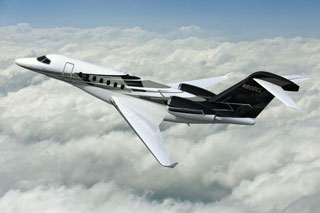
Citation Longitude
- Biggest news: It can fly 4,000 nm—farther than any Cessna jet.
- Enters service: 2017
- People aboard: Crew of two or three and eight passengers.
- Extra: It is the launch airplane for the Snecma Silvercrest engine.
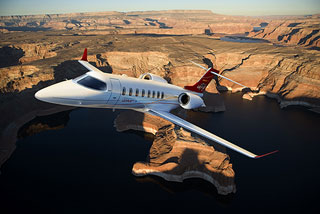
Learjet 75
- Biggest news: Cruise at Mach 0.81 at 51,000 feet.
- Enters service: First half of 2013.
- People aboard: Crew of two and eight passengers.
- Extra: With full fuel and eight passengers it can go 1,950 nm.
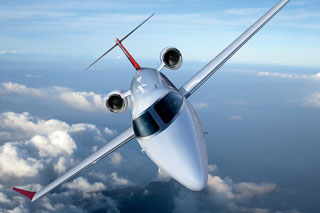
Learjet 70
- Biggest news: Can fly 2,000 nm at 51,000 feet.
- Enters service: First half of 2013.
- People aboard: Crew of two and six passengers.
- Extra: Powered by Honeywell with Garmin G5000 avionics.
Report from South Africa
IAOPA meets to challenge global issues
To celebrate its fiftieth anniversary, the International Council of Aircraft Owner and Pilot Associations returned to its roots in a sense when it honored one of its founding members. Hendrik Pistorius, 95, received special recognition for his assistance in founding AOPA-South Africa and IAOPA in 1962. A frequent participant in IAOPA’s biennial world assemblies, he helped organize the group’s 1992 meeting in South Africa, and, along with his wife, Gertie, attended the group’s latest meeting this spring in Stellenbosch, South Africa. There, the couple received congratulations from IAOPA President Craig Fuller for their vision in launching the organization that now represents some 450,000 pilots in 70 countries around the world. The latest countries to join the international federation are Namibia and the United Arab Emirates. Several other countries have petitioned to join IAOPA.
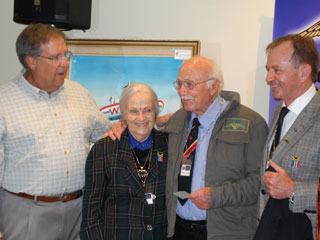
Delegates from 23 countries totaling more than 145 people made the Stellenbosch World Assembly one of the largest ever, said Secretary General John Sheehan, who recently retired from the position after 15 years of service to IAOPA. During the meeting, the delegates debated issues facing general aviation around the world, particularly focusing on airspace allocation, the impact of unmanned aircraft, the impact of next generation air traffic control equipage requirements, and safety management, among others.
The group agreed on 22 resolutions that will be shared with the International Civil Aviation Organization and various national civil aviation authorities. The resolutions took on themes familiar to pilots everywhere: ways to grow the pilot population and improve the flight training experience, airport and airspace access, and reduced mandated costs. — Thomas B. Haines
He is the Jetman
He’s done it before but it never gets old. This time Swiss pilot Yves “Jetman” Rossy strapped on his wing with four small jet engines manufactured for the model airplane community and flew above Rio de Janeiro May 2.
As was the procedure when Rossy flew the Grand Canyon, he first dropped from a helicopter. He flew alongside Ipanema, Copacabana, and Sugar Loaf Mountain before pulling his parachute and safely landing on Copacabana beach.
He reaches speeds up to 160 knots using a simple throttle in his hand. The rest is all Rossy, who twists his body and raises or lowers his legs and arms to fly like Superman.
The former Swiss Airlines captain still hopes one day his friends will get their own carbon-fiber wings for a play date in the sky.
Test Pilot Answers
- A return flight would be impossible because the headwind would equal the true airspeed, and groundspeed would be zero.
- Execute a wings-level skidding turn at a constant airspeed. Compass turning error is the result of banking. This can be demonstrated during a turn made while taxiing.
- It was a two-place glider actually built by Allied prisoners of war to escape from Oflag IV-C (Colditz Castle) near Leipzig, Germany. The glider was approaching completion when the U.S. Army liberated the camp on April 16, 1945.
- A low is characterized by rising air that cools adiabatically, a primary cause of cloudiness. A high is characterized by subsidence (descending air), which results in warming and a decrease in cloudiness.
- As of March 26, 2008, Vermeulen had collected 5,468 different airsickness bags, his favorite being one that had spent 16 days in space aboard orbiter Columbia.
- The Beech 35 Bonanza, the Cessna 195 (which preceded the Cessna 190), the Mooney M.20B Mark 21, and the Piper PA–23 Apache.
- Runway 14/32 at the Qamdo Bangda Airport (ZUBD) in Tibet is 18,045 feet long. Considering its elevation of 14,219 feet, the density altitude can be so high as to make a takeoff impossible in many airplanes, no matter how long the runway.
- 467 feet. The carrier steamed into a strong surface wind to better enable the heavily loaded bombers to become airborne.
New weekly aviation show debuts
A french chateau that boasts a collection of fighter aircraft. A fantastic flying adventure through New Zealand. Details of the Hawker Beechcraft bankruptcy. An insider’s guide to AERO Friedrichshafen. Exclusive interviews with GA industry notables. These and other timely and interesting stories are featured on AOPA Live This Week, a television-style webcast created by Executive Producer Warren Morningstar and hosted by Editor in Chief Tom Haines, which is posted every Thursday. Running 20 to 30 minutes each week, AOPA Live This Week is an exclusive AOPA Media offering.
Revenues up
Shortly after reporting an improving economic picture and a reduction in losses for the first quarter, Cessna Aircraft Company recalled 150 workers as Hawker Beechcraft laid off 350. Piper Aircraft also reported better financial numbers, with a 20 percent increase in revenue. Hawker Beechcraft is operating normally under Chapter 11 bankruptcy rules.Cessna won a year-long beauty contest with other large manufacturers, all of whom wanted to be China’s pick for partnering. China officials finally signed an agreement with Cessna in April. Revenues at Cessna increased $113 million. The segment loss of $6 million was an improvement of $32 million, primarily because of the higher volumes. Cessna’s backlog at the end of the first quarter was $1.7 billion, down $167 million from the end of 2011. Bell revenues increased $245 million in the first quarter compared to the same period the previous year.


